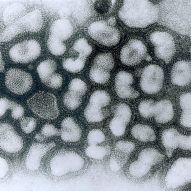Canine Influenza Outbreak: New Updates | Dr. Justine Lee
The Canine Influenza Virus (CIV) Outbreak: Is it spreading beyond the Midwest?
Great information from Merck Animal Health below:
A little more than a month ago, veterinarians in the Chicago area noticed a sharp increase in the number of dogs coming into their clinics with respiratory illness. The disease was first thought to be Canine Influenza Virus, H3N8, which is a respiratory pathogen of dogs that was first isolated in Florida in 2004.
Subsequent testing, however, carried out with the assistance of the New York State Animal Diagnostic Laboratory at Cornell and the Wisconsin Veterinary Diagnostic Laboratory, identified the outbreak as being caused by a virus closely related to Asian strains of influenza A H3N2 viruses, currently in wide circulation in Chinese and South Korean dog populations since at least 2006.
On April 9, scientists at the National Veterinary Services Laboratories in Ames, Iowa, completed genome sequencing on the virus, and confirmed it to be Asian H3N2. All eight genome segments of the virus match closely (99 percent identity) with viruses isolated from dogs and cats from South Korea. This suggests that the virus likely came from this region. It’s the first reported incidence of H3N2 in the United States.
In support of the veterinary community and accelerating the time to diagnosis, Merck Animal Health sponsored a diagnostic sampling program with Chicago area veterinary clinics. Nasal and pharyngeal swabs were taken from sick dogs to help identify the causative agent. Since testing began, more than 170 dogs (of those tested) have tested positive for Canine Influenza Virus using a broadly targeted influenza-A matrix PCR test. CIV cases have been confirmed in Illinois, Wisconsin and Indiana. In total, more than 1,100 cases have been reported and six dogs have died. None of the positive cases had been vaccinated prior for Canine Influenza.
“This is the first time this H3N2 strain of Canine Influenza Virus has been found in North America, so there’s a lot we don’t yet know about it,” said Edward Dubovi, Ph.D., Professor of Virology and Director, Virology Laboratory, Animal Health Diagnostic Center, College of Veterinary Medicine, Cornell University. “Veterinary professionals are advised that diagnostic testing of samples from sick pets can be done using a broadly targeted Influenza A matrix reverse transcriptase-polymerase chain reaction assay (RT-PCR). The canine-specific Influenza A H3N8 RT-PCR in use in several laboratories will not detect this virus. We are developing a H3N2-specific serologic assay and are continuing to work with Merck Animal Health to test serum samples from sick dogs, both of which will provide us with valuable information about this emerging disease.”
- Merck Animal Health has been actively engaged in this situation and is committed to providing veterinary clinics with the most up-to- date information available (i.e., Merck sponsored a CIV webinar for veterinarians with experts Dr. Dubovi and Dr. Justine Lee that was hosted at http://vetgirlontherun.com/vetgirl-merck-civ/
- Utilize available resources and information to help implement biosecurity measures and minimize the chance H3N2 could impact your clinic – have sanitation protocols in place.
- Use the media to help educate the public during this outbreak. Merck’s veterinary technical services team collaborated with the Chicago veterinary community to support their participation in media interviews.
- Provide your clients with recommendations and tips on minimizing risk.
- While it is unknown if the currently available canine H3N8flu vaccines will protect against influenza H3N2, the H3N8 virus remains a health threat in some areas – it’s important to continue discussing canine influenza vaccination for those dogs that are at risk for exposure (exposure to other dogs at doggy day care, dog parks, boarding facilities, dog shows, sporting events and dogs living in inner cities).
- Other canine respiratory diseases also remain a threat, so it is important to continue protecting against as many other pathogens as possible for Canine Respiratory Disease Complex (CIRDC).
- Actively watch for the clinical signs of respiratory illness in dogs and act quickly if you suspect CIV, as the disease spreads rapidly CIV H3N2.
More information about Canine Influenza Virus, visit doginfluenza.com.


No Comments
Trackbacks/Pingbacks